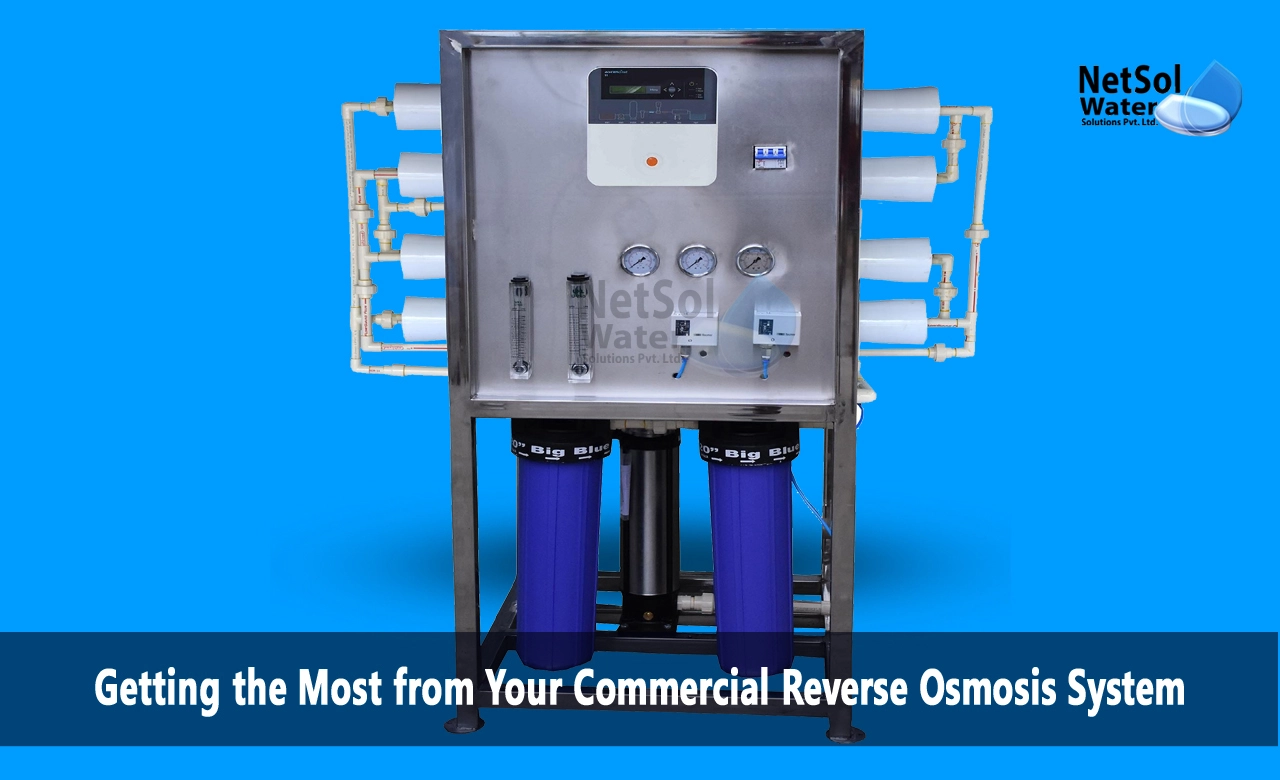How to Get the Most from Your Commercial RO Plant?
Reverse osmosis (RO) systems are becoming increasingly popular for commercial applications such as restaurants, hotels, office buildings, hospitals, schools and other facilities. RO effectively removes contaminants from water by pushing it through a semipermeable membrane using water pressure. This results in purified water that is free of minerals, salts, viruses, bacteria and more. While extremely effective, RO systems do require proper maintenance and operation to maximize performance and water quality. This blog explores tips on getting the most from a commercial RO system.
Pretreatment is Key
One of the most important factors in RO performance is appropriate pretreatment. Before water even reaches the RO membrane, it should go through filtration to remove sediment, chlorine and other contaminants. Sediment filters protect the delicate RO membrane from particle damage and fouling. Activated carbon filters remove free chlorine that can degrade the membrane. Softening systems may also be used to reduce scaling from hard water minerals. Proper pretreatment extends the life of membranes and prevents early fouling or failure. Systems should be inspected and filters changed per the manufacturer's recommendations.
Monitoring Feed Water Quality
In addition to pretreatment, monitoring feed water (the water entering the RO system) is crucial. Feed water should be tested periodically to ensure that conditions which could negatively affect the membrane are avoided. For example, pH, iron levels, manganese and hardness should all be kept within specified limits. Conductivity or total dissolved solids (TDS) levels in the feed water should also be checked. Significant fluctuations could indicate that pretreatment requires maintenance. Keeping feed water parameters optimal maximizes the operating life and efficiency of the membrane.
Maintaining Proper Pressures
RO systems operate by overcoming the natural osmotic pressure of water via applied pressure. The optimal pressure differential between feed water and product water must be maintained for efficient separation. Since RO membranes can become fouled over time, feed pressure may need to be increased to compensate. However, maximum pressure specifications should never be exceeded. Monitoring pressures ensures that the RO system is performing optimally. A drop in pressure could indicate scaling or fouling, while spikes may accelerate membrane wear. Pressures should be logged and tracked.
Limiting Flux Decline
As membranes become fouled, flow rates (flux) will start to decline. To maximize RO system performance, flux decline should be limited through effective pretreatment and membrane cleaning. Allowing fluxes to drop too low reduces system productivity. It also requires increased pressure to maintain flow, accelerating membrane wear. Guidance on maximum flux decline should be followed diligently. Troubleshooting pretreatment and cleaning procedures may be required to prevent fluxes dropping below acceptable levels.
Utilizing Permeate Flow Meters
Permeate flow meters measure the amount of purified water produced by a RO system. Sudden changes in permeate flows can indicate a problem with membranes that requires attention. Consistent low flows may mean pretreatment is not adequately removing foulants or scaling. Permeate flows that are too high can imply membrane damage or leaks. By tracking flows with meters, issues can be identified and remedied before significant impacts occur. Data from flow meters also helps schedule membrane cleanings and replacements effectively.
Cleaning and Replacing Membranes
RO membrane cleaning and replacement are unavoidable over time. However, following best practices can significantly extend membrane life. Cleanings should be performed on a regular schedule and whenever fluxes decline. Only approved cleaning chemicals at the proper concentrations should be used. It is critical to follow cleaning procedures precisely. Effective cleanings can restore flow rates and prevent premature membrane failure.
Despite cleaning, RO membranes have a limited lifespan. System productivity will decline, and membranes will need to be replaced. Planning membrane replacement before failure allows for minimal system downtime. Replacement should also be done before fluxes drop excessively low. With properly-trained staff and the right replacement procedures, new membranes can be installed efficiently.
Proper System Operation
In additional to maintenance, optimizing day-to-day operation is key to maximizing RO performance. The system should run on a consistent schedule to prevent bacterial growth during stagnation. Feed pressure and flow should align with design specifications. The product water to feed water ratio should be tracked to catch problems early. Waste flows should also be monitored for unusually high losses. Adhering to operating procedures prevents avoidable system disruptions. With training, staff can learn to spot potential issues before they become significant.
Conclusion
Commercial RO systems provide high-quality purified water when properly maintained and operated. By utilizing pretreatment, monitoring feed water conditions, maintaining pressures, limiting flux decline, tracking flows, cleaning and replacing membranes timely, and following operating procedures, commercial facilities can optimize RO system performance and water quality. With properly trained staff and diligent monitoring, a RO system will perform reliably for many years. Taking steps to get the most from a commercial system saves money while ensuring safe, clean water.
Do you need an advice or assistance on selecting the best water and waste water treatment unit? We have solutions for all your problems!
Let us know your problem, our experts will make sure that it goes away.
For an assistance or related query,
Call on +91-965-060-8473 Or write us at enquiry@netsolwater.com



